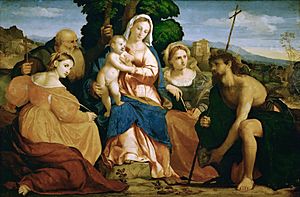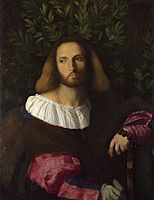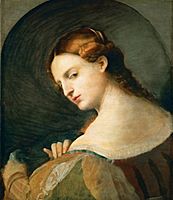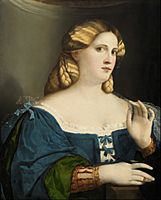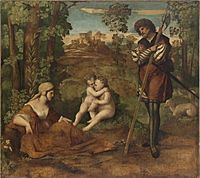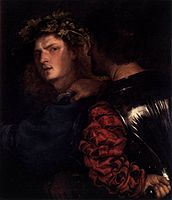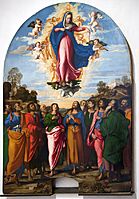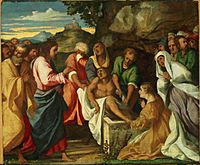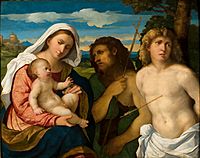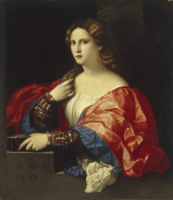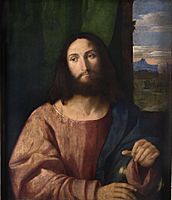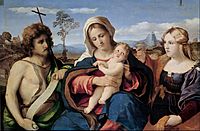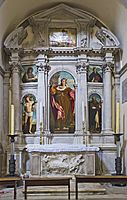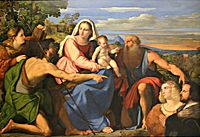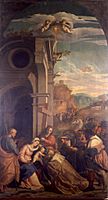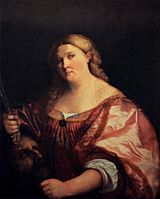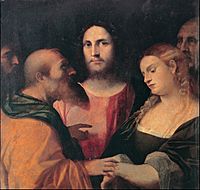Palma Vecchio facts for kids
Quick facts for kids
Palma Vecchio
|
|
|---|---|
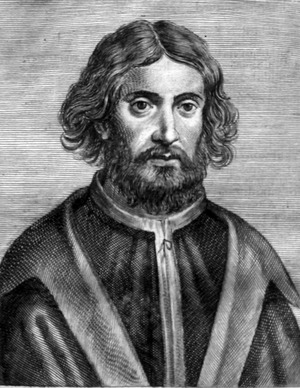
Imaginative portrait, c. 1648
|
|
| Born |
Jacomo Nigretti de Lavalle
c. 1480 Serina, Republic of Venice
|
| Died | 30 June 1528 (aged 47–48) Venice, Republic of Venice
|
| Nationality | Venetian |
| Known for | Painting |
| Movement | High Renaissance |
Palma Vecchio (c. 1480 – 30 July 1528), born Jacopo Palma, was a famous Venetian painter. He lived during the Italian High Renaissance period. People called him Palma Vecchio (which means "Palma the Elder") to tell him apart from his great-nephew, who was also a painter. His great-nephew was known as Palma il Giovane ("Palma the Younger").
Contents
The Life of Palma Vecchio
Palma Vecchio was born in a town called Serina Alta, near Bergamo. This area was part of the Republic of Venice. However, he spent most of his painting career in or near the city of Venice. We know he was in Venice by 1510, but he might have been there even earlier.
Becoming a Painter
Palma Vecchio likely learned to paint from Andrea Previtali. Previtali was also from Bergamo. At first, Palma's paintings showed the influence of Giovanni Bellini. Bellini was a very old and respected painter in Venice at that time. But Palma soon started to follow the newer styles of artists like Giorgione and Titian.
Rising to Fame
After some other famous painters left Venice or passed away, Palma Vecchio became one of the most important artists. Many people wanted him to paint for them. He was very popular until his early death at age 47. Today, more and more paintings are being recognized as his work. Experts admire his skill with paint and colors.
What Palma Vecchio Painted
Palma Vecchio painted many different kinds of pictures. He created new types of mythical scenes set in nature. He also painted portraits, often showing beautiful, ideal people.
He was also known for his religious paintings. A common type was the sacra conversazione. This means "holy conversation." These paintings showed the Virgin Mary and baby Jesus with a group of saints. Sometimes, the people who paid for the painting were also included. These scenes often had a beautiful landscape in the background.
Wealthy people in Venice bought these paintings for their homes. Palma also painted large altarpieces for churches. These were for churches both in Venice and in nearby towns. He quickly learned from other artists across Italy. He sometimes even copied poses from Michelangelo.
Palma's Later Style
In his later years, Palma Vecchio's art showed a clear High Renaissance style. His paintings were known for their balanced poses and rich, bright colors. He created many different types of ideal human figures. His work was dignified and well-composed. He had a workshop where he taught other artists. He greatly influenced painters like Bonifazio Pitati and Giovanni Busi.
Famous Works by Palma Vecchio
Many of Palma Vecchio's paintings are said to feature his daughter, Violante. Some of his well-known works include:
- A group of six paintings in the Santa Maria Formosa church in Venice. The main painting shows Saint Barbara.
- A painting in the Dresden Gallery called The Three Graces. It shows three sisters sitting outdoors.
- A portrait found in Venice in 1900, believed to be of Violante.
Other important paintings by Palma Vecchio are:
- The Last Supper (in the National Gallery for Foreign Art)
- A Madonna painting (in the Santo Stefano church in Vicenza)
- The Epiphany (Brera Gallery, Milan)
- The Holy Family with a Young Shepherd (Louvre, Paris)
- Lady with a Lute (Alnwick Castle, England)
- Christ at Emmaus (Pitti Palace)
- Holy Family with Saint John the Baptist and Saint Catherine
Images for kids
-
St. Barbara polyptych, 1523–24, Santa Maria Formosa, Venice
See also
 In Spanish: Palma el Viejo para niños
In Spanish: Palma el Viejo para niños


